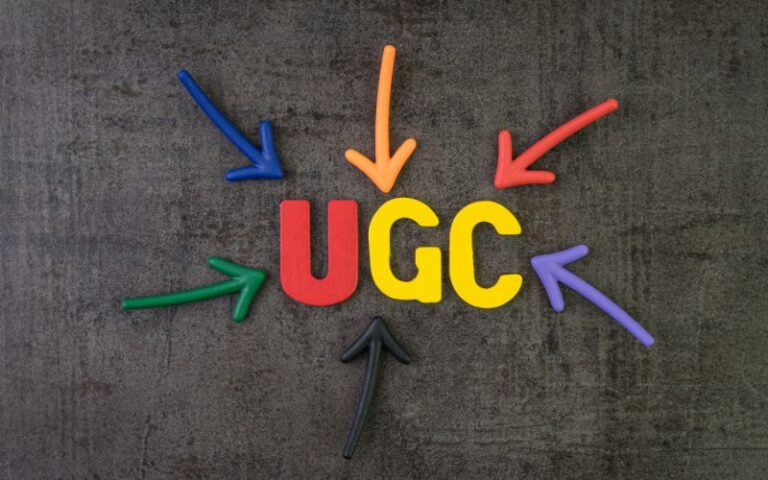User-Generated Content: Transforming Customers into Brand Advocates

User-generated content (UGC) has emerged as a powerful tool for marketers seeking to connect with their audience authentically. In today’s digital landscape, where consumers crave authenticity and genuine connections with brands, leveraging user-generated content can turn customers into enthusiastic brand advocates.
Introduction to User-Generated Content (UGC)
What is user-generated content?
User-generated content refers to any form of content – such as text, images, videos, reviews, and social media posts – created by consumers rather than brands themselves. It encompasses any content that is voluntarily contributed by customers, fans, or followers of a brand.
Importance of UGC in modern marketing
In an era dominated by social media and online reviews, traditional marketing strategies are no longer as effective in building trust and credibility. Consumers are more likely to trust recommendations from their peers than branded advertisements. User-generated content serves as social proof, providing genuine endorsements of a brand’s products or services.
Types of User-Generated Content
User-generated content comes in various forms, each offering unique opportunities for brand engagement and advocacy.
Text-based content
User-written reviews, testimonials, and blog posts are examples of text-based UGC. These authentic narratives offer valuable insights into the experiences of real customers, helping to build trust and credibility.
Image and video content
Photos and videos shared by customers showcasing their interactions with a brand’s products or services are highly engaging forms of UGC. Visual content allows consumers to visualize themselves using the product, making it more relatable and persuasive.
Reviews and testimonials
Customer reviews and testimonials play a crucial role in influencing purchasing decisions. Positive reviews act as endorsements, while negative reviews provide opportunities for brands to address concerns and demonstrate their commitment to customer satisfaction.
Social media posts
Posts shared by customers on social media platforms like Instagram, Twitter, and Facebook can significantly impact brand perception. Whether it’s a photo of a meal at a restaurant or an unboxing video of a new product, social media posts create buzz and generate excitement among followers.
Benefits of User-Generated Content
The use of user-generated content offers several advantages for brands looking to enhance their marketing efforts and foster stronger relationships with customers.
Increased authenticity and credibility
UGC provides authentic and unbiased perspectives on a brand’s products or services, making it more trustworthy than branded content. Consumers are more likely to believe the experiences of their peers than marketing messages crafted by companies.
Enhanced brand engagement
By encouraging customers to share their experiences and opinions, brands can foster a sense of community and belonging among their audience. User-generated content sparks conversations and encourages interaction, leading to higher levels of engagement and brand loyalty.
Cost-effective marketing
Compared to traditional advertising campaigns, which can be costly to produce and distribute, user-generated content is relatively inexpensive to acquire. Brands can leverage the creativity and enthusiasm of their customers to create compelling content at a fraction of the cost.
SEO benefits
User-generated content can also boost a brand’s search engine visibility. Positive reviews and social media mentions contribute to a brand’s online reputation and can improve its ranking in search engine results pages (SERPs).
Strategies for Encouraging User-Generated Content
To harness the power of user-generated content effectively, brands must implement strategies that encourage customers to create and share content organically.
Creating shareable experiences
Brands can create memorable experiences that inspire customers to share their stories online. Whether it’s hosting events, launching interactive campaigns, or designing unique packaging, creating shareable moments can ignite conversations and generate UGC.
Implementing branded hashtags
Branded hashtags provide a way for brands to organize and track user-generated content across social media platforms. By creating a dedicated hashtag for their brand or campaign, companies can encourage customers to tag their posts and participate in the conversation.
Running contests and giveaways
Contests and giveaways are effective incentives for encouraging user-generated content. By offering prizes or rewards for the best user submissions, brands can motivate customers to create and share content related to their products or services.
Engaging with users directly
Building relationships with customers and engaging with them directly can lead to valuable user-generated content opportunities. Brands that actively respond to customer feedback, comments, and messages demonstrate their commitment to listening and understanding their audience.
Leveraging User-Generated Content Across Platforms
User-generated content can be leveraged across various marketing channels to maximize its impact and reach.
Website integration
Brands can showcase user-generated content on their website to provide social proof and inspire trust among visitors. Featuring customer reviews, testimonials, and social media posts on product pages can influence purchasing decisions and increase conversion rates.
Social media channels
Social media platforms are ideal channels for amplifying user-generated content and reaching a broader audience. Brands can repost user submissions, share customer stories, and engage with followers to foster a sense of community and belonging.
Email marketing campaigns
Including user-generated content in email marketing campaigns can increase engagement and click-through rates. Brands can feature customer reviews, user photos, and social media highlights to provide valuable content to subscribers and encourage action.
Product packaging and advertising materials
User-generated content can also be incorporated into product packaging and advertising materials to enhance brand messaging and authenticity. Including quotes from satisfied customers or featuring photos of real people using the product can make marketing materials more relatable and persuasive.
Case Studies: Successful User-Generated Content Campaigns
Several brands have successfully leveraged user-generated content to strengthen their brand identity and drive business results.
Airbnb’s #LiveThere campaign
Airbnb launched the #LiveThere campaign, encouraging users to share photos and stories of their travel experiences using the platform. The campaign showcased authentic user content and highlighted the unique benefits of staying in Airbnb accommodations.
GoPro’s user-submitted videos
GoPro’s entire marketing strategy revolves around user-generated content, with customers sharing their adrenaline-fueled adventures captured on GoPro cameras. The brand’s social media channels are filled with user-submitted videos, showcasing the versatility and durability of its products.
Starbucks’ White Cup Contest
Starbucks launched the White Cup Contest, inviting customers to decorate their iconic white cups and share photos of their creations on social media. The contest generated thousands of entries and sparked creativity among Starbucks fans worldwide.
Measuring the Impact of User-Generated Content
To evaluate the effectiveness of user-generated content, brands must track relevant metrics and analyze performance data.
Metrics to track effectiveness
Key performance indicators (KPIs) for measuring UGC effectiveness include engagement rates, click-through rates, conversion rates, and sentiment analysis. By monitoring these metrics, brands can assess the impact of UGC on their marketing objectives.
Tools for monitoring UGC performance
Numerous tools and platforms are available to help brands monitor and analyze user-generated content. From social media monitoring tools to sentiment analysis software, these resources provide valuable insights into audience preferences and behaviors.
Adjusting strategies based on insights
Based on performance data and audience feedback, brands can refine their user-generated content strategies to optimize results. Whether it’s tweaking campaign messaging, targeting specific audience segments, or experimenting with new content formats, continuous optimization is key to success.
Challenges and Risks of User-Generated Content
While user-generated content offers numerous benefits, brands must also be aware of potential challenges and risks associated with its use.
Maintaining brand consistency
Brands must ensure that user-generated content aligns with their brand values, messaging, and aesthetic guidelines. Inconsistencies in tone, style, or visual identity can dilute brand perception and confuse consumers.
Dealing with negative feedback
Not all user-generated content will be positive, and brands must be prepared to address negative feedback and criticism effectively. Ignoring or deleting negative comments can damage brand reputation, while transparent and empathetic responses can turn negative experiences into positive outcomes.
Legal and copyright issues
Brands must respect copyright laws and intellectual property rights when using user-generated content. Obtaining permission from content creators and giving proper credit for their work are essential steps to avoid legal disputes and protect brand integrity.
Best Practices for Managing User-Generated Content
To maximize the benefits of user-generated content while mitigating risks, brands should follow best practices for managing and moderating UGC.
Establishing clear guidelines
Brands should establish clear guidelines and criteria for what types of content are acceptable for sharing and promotion. By setting expectations upfront, brands can maintain control over the quality and relevance of user-generated content.
Moderating content effectively
Implementing robust moderation processes ensures that user-generated content meets brand standards and complies with community guidelines. Automated tools and manual review processes can help identify and remove inappropriate or off-brand content.
Responding to user feedback promptly
Engaging with users and responding to their feedback in a timely manner demonstrates a commitment to customer satisfaction and fosters trust and loyalty. Whether it’s addressing concerns, answering questions, or thanking customers for their support, proactive communication is essential.
Conclusion
User-generated content has become a cornerstone of modern marketing strategies, offering brands a powerful way to connect with their audience authentically. By leveraging the creativity and enthusiasm of their customers, brands can turn consumers into enthusiastic brand advocates, driving engagement, loyalty, and sales.
